ENOTA: Termalija家庭康养所是ENOTA过去15年在Terme Olimia建造的一系列项目中最新的一个,它实现了从1980年代起建造的典型康养中心到现代疗养温泉的全面改造。这种转变是渐进的——每一步都是根据当时的需求进行的,没有遵循任何预先设想的发展计划,投资者和设计方一致认为每栋新建筑其实都是最后一栋,它们是唯一的。
ENOTA: Termalija Family Wellness is the latest in the series of projects which we have built at Terme Olimia in the last fifteen years and concludes the complete transformation of the complex from a classic health centre built in the 1980s to a modern relaxing thermal spa. The transformation has been characterised by its gradual nature – each step was carried out in response to the then-current needs and did not follow any preconceived development plan. In fact, every new building was believed both by the investor and by ourselves to be the last.
视频 Video
Credits: Video is filmed & edited by Miran Kambič
通常来说,这些复杂产物的发展会导致出现一系列的延伸,继而慢慢填满空间。无论是从周期还是从设计上来看,都不会掩盖住它们的起源。在Terme Olimia的改造中ENOTA采取了一种截然不同的方式,随着每一栋新建筑的出现,设计师试图从城市化的角度来改善现状。与此同时还投入了大量精力来设计这些建筑,尽管每次都增加了新的项目,但这些建筑实际上并没有填满空间,而是将空间与周围的自然联系起来。
The usual development of such complexes results in a series of extensions that slowly fill the space and do not conceal their origin in terms of either the period or the design. We took a rather different approach in the renovation of Terme Olimia, and with each new building, we tried to improve the situation also in terms of the urbanism. At the same time, we invested a lot of effort into designing the buildings in such a way that despite the new programme added each time, the buildings do not actually fill the space but connect it even more with the nature that surrounds them.
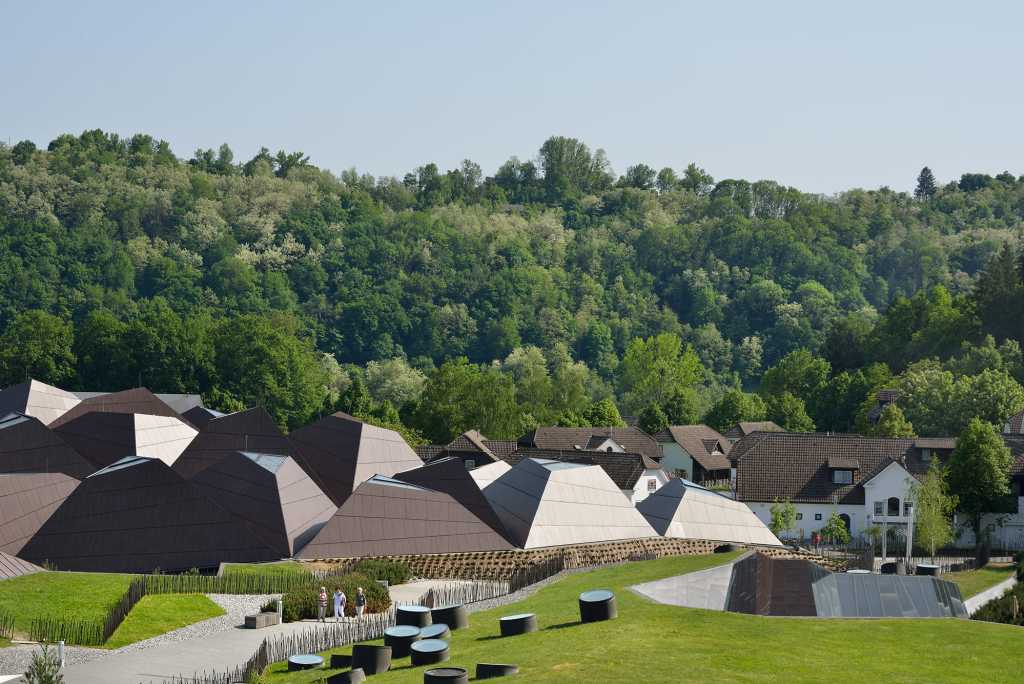


这同样适用于Termalija家庭康养所。新设施位于室外游泳池的冬季覆盖区域。为了腾出稀缺的室外空间,盖子本应在每年夏季收回,但实际上由于收回过程的复杂性,这一点从未实现过。由于其尺寸和形状,室外水面的薄膜覆盖物在周围建筑结构中显得非常突出。
The same applies to the Termalija Family Wellness. The new facility is located at the site of the former wintertime covering of the outdoor pool. The cover was supposed to be retracted every summer to free up the scarce outdoor space, but in practice, this was never done because of the complexity of the retraction process. With its size and form, the membrane covering of the outdoor water surfaces stood out considerably from the surrounding built structure.


虽然之前的项目是投资者的意愿,但这个项目实际上是由设计方提出的。现有的冬季覆盖物显然不利于客人体验这种原本非常自然的设计。但这并不是唯一的原因:在方案和设计中,具有热含量的旧部分与新部分形成了鲜明的对比,引起了越来越多的客人的抱怨,他们希望这项服务处于同等水平。这说服了投资者继续进行整个建筑群的最后一步改造。
While the previous projects were the result of the wishes of the investor, this one was actually proposed by us. The existing winter covering was a definite detriment to the guests’ experience of this otherwise very naturally designed complex. But this was not the sole reason: in its programme and design, the old part featuring thermal content stood in stark contrast to the new one, giving rise to mounting complaints from guests who wanted the service to be on an equal level. This persuaded the investor to go ahead with this last step of the transformation of the entire complex.



在此之前,随着每个后续项目的进行,大部分的建筑被切割并填充在周围的地形下,这减少了建筑在场地上的体量感。然而在Termalija家庭康养所项目中,不能简单地重复这种设计方法。特别是在有水的区域需要一个更大的建筑,而不是简单地把它埋在地下。不再只参考周围的自然景观,解决方案的灵感是从周围乡土建筑的体量和形式上找到的。
Previously, a greater portion of the building was cut-and-filled under the surrounding terrain with each subsequent project, which reduced their presence on the site. In the case of the Termalija Family Wellness, however, we weren’t able to simply repeat this design approach. The volume of the necessary space, especially in the area with water surfaces, required the siting of a much larger structure which could not simply be buried below the grade. No longer being able to reference only the surrounding natural landscape, the solution was found in the scale and form of the surrounding vernacular structures.


虽然设计师仍然能够像以前设计Orhidelia一样设计Termalija的配套方案,但是为了防止建筑的规模超过周围环境,水面上方的大屋顶被分成了几组较小的部分。从远处看,四面体体积的新集群结构的形状、颜色和规模其实是周围乡村建筑集群的延续,它只是在视觉上延伸到了建筑群的中心。
While we were still able to design Termalija’s supporting programme in the same way as we had previously done Orhidelia, the large roof above the water area was divided into sets of smaller segments to prevent its scale from overwhelming the surroundings. Viewed from a distance, the shape, colour, and scale of new clustered structure of tetrahedral volumes is a continuation of the cluster of the surrounding rural buildings, which simply visually extends into the heart of the complex.


由此产生的精细结构使设计师能够解决另一项重要任务。看似复杂的几何形状赋予了新屋顶一个静态强度,使得整个游泳池空间几乎没有支撑柱。通过这种方式,新屋顶就像漂浮在水池平台上方,作为外部空间来设计。由于夏季缺少室外空间,因此必须研究解决方案,以提供与夏季开放空间相同的冬季封闭空间。屋顶上的许多天窗,以及表面完全打开的立面玻璃,使客人能够自由地穿过建筑内部。尽管新屋顶的体量很大也占据了空间,但它只是作为一个大的夏季遮阳伞,实际上没有侵占任何宝贵的外部空间。
The resulting fine structure of volumes has enabled us to solve another important task. The seemingly complex geometry gives the new roof static strength, allowing the entire pool space to be covered virtually without supports. In this way, the new roof floats above the pool platform, which is designed as an exterior space. Due to the lack of outdoor spaces in the summer, it was imperative to examine solutions which would deliver the same closed space used by the guests in winter as an open space in summer. Numerous skylights in the roof, together with the ability to fully open all the facade glass surfaces, enable the guests to seamlessly pass through the interior of the building. Despite its size and the space it occupies, the new roof simply acts as a big summertime sunshade and does not usurp any of the precious exterior space.


L&R: ©Miran Kambič


L&R: ©Miran Kambič
L&R: ©Miran Kambič

L&R: ©Miran Kambič



L&R: ©Miran Kambič



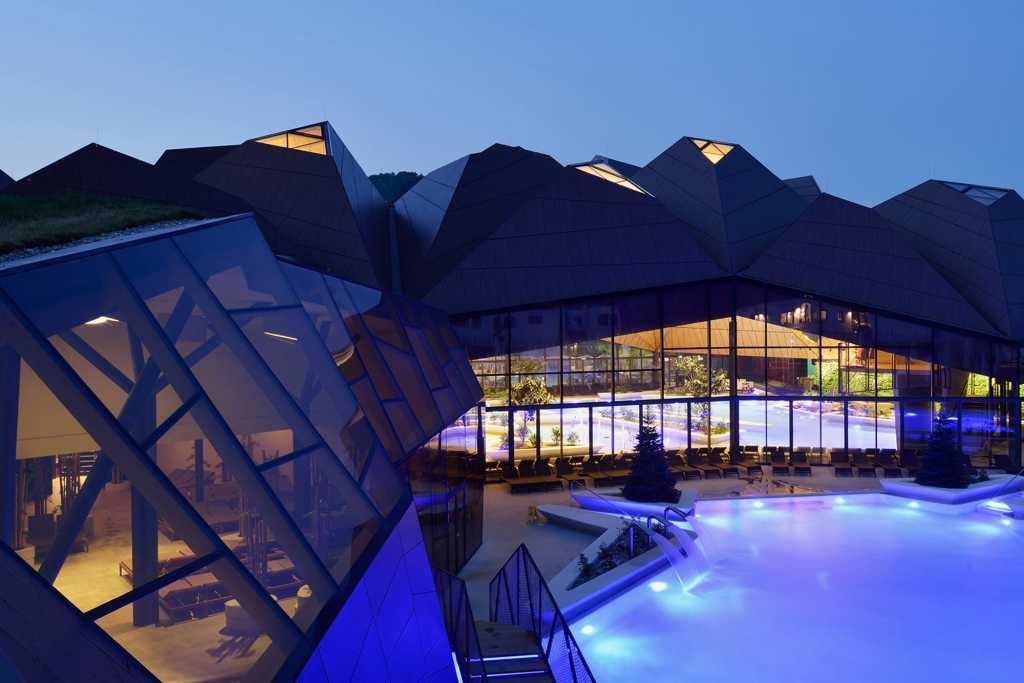
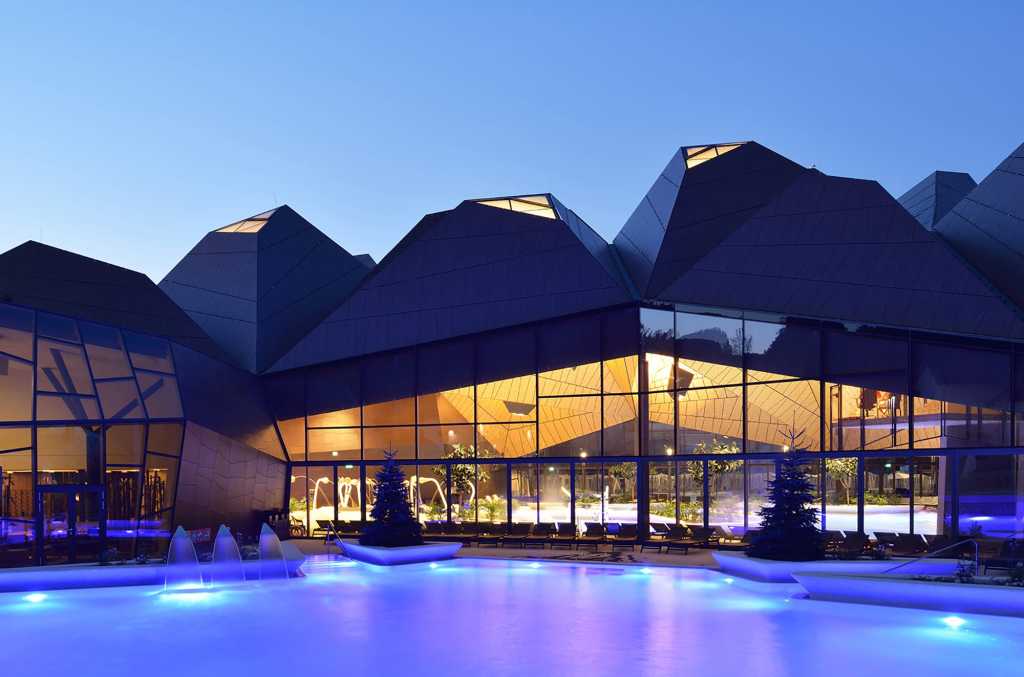
白色模型鸟瞰 White model aerial view
场地平面 Site plan 一层平面 Groundfloor plan
一层平面 Groundfloor plan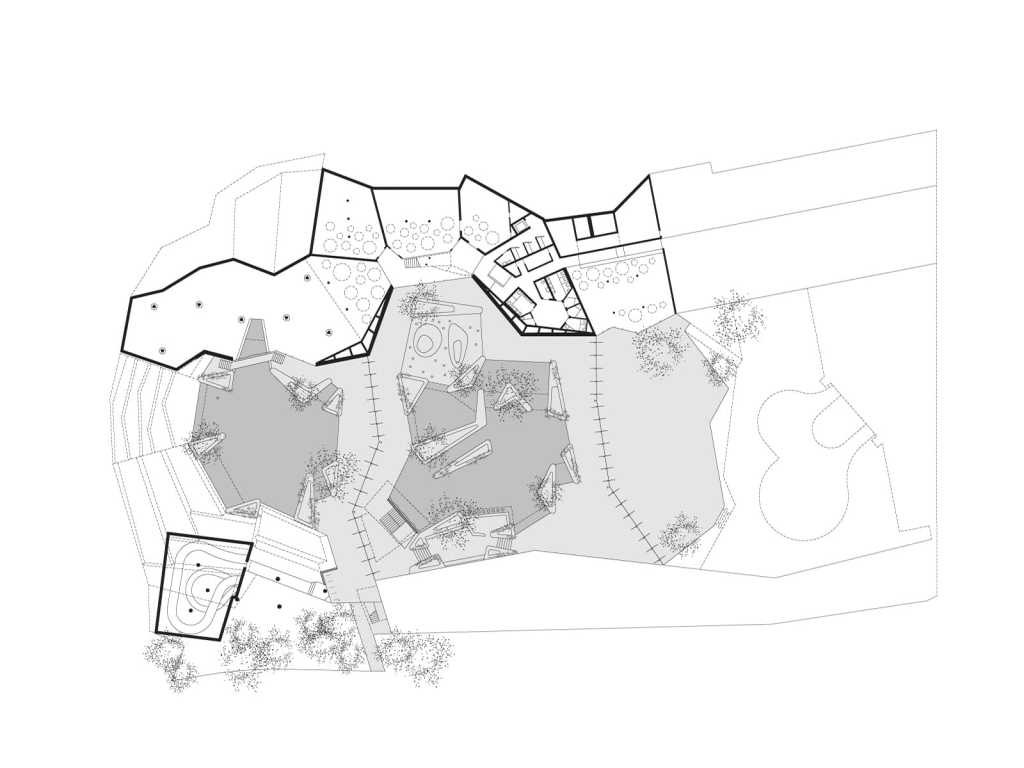 二层平面 First floor plan
二层平面 First floor plan
屋顶平面 Roof plan 剖面 Sections
剖面 Sections
立面 Elevations 室内外空间的联系 Connection between inner and outer space
室内外空间的联系 Connection between inner and outer space
绿色屋顶景观延伸到周围地形之中 Extension of green roof landscape into the surrounding terrain
项目名称: Termalija家庭康养所
类型: 委托
设计时间: 2016年
建成时间: 2018年
建筑面积: 8.780平方米
场地面积: 10.200平方米
使用面积: 3.930平方米
造价: 10.000.000欧元
客户: Terme Olimia
地点: 斯洛文尼亚波德契特特克
建筑设计: ENOTA
照片: Miran Kambič
项目团队: Dean Lah, Milan Tomac, Peter Sovinc, Nuša Završnik Šilec, Polona Ruparčič, Peter Karba, Carlos Cuenca Solana, Jurij Ličen, Tjaž Bauer, Sara Mežik, Eva Tomac, Jakob Kajzer, Maja Majerič, Goran Djokić
合作者: Ivan Ramšak s.p.(结构工程)、Nom biro (电气安装)、Nom biro (机械服务)、Darrtech (泳池技术)
Project: Termalija Family Wellness
Type: commission
Year: 2016
Status built: 2018
Size: 8.780 m2
Site: 10.200 m2
Footprint: 3.930 m2
Cost: 10.000.000 EUR
Client: Terme Olimia
Location: Podčetrtek, Slovenia
Architecture: ENOTA
Photo: Miran Kambič
Project team: Dean Lah, Milan Tomac, Peter Sovinc, Nuša Završnik Šilec, Polona Ruparčič, Peter Karba, Carlos Cuenca Solana, Jurij Ličen, Tjaž Bauer, Sara Mežik, Eva Tomac, Jakob Kajzer, Maja Majerič, Goran Djokić
Collaborators: Ivan Ramšak s.p. (structural engineering), Nom biro (electrical installations), Nom biro (mechanical services), Darrtech (pool technology)
更多 Read more about: ENOTA


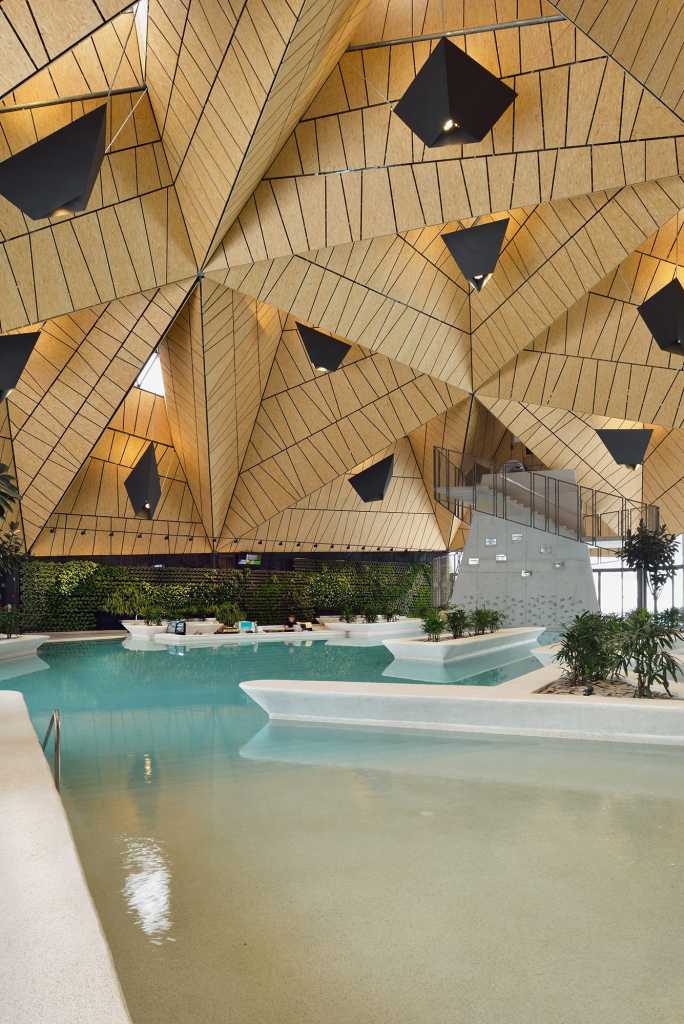











0 Comments